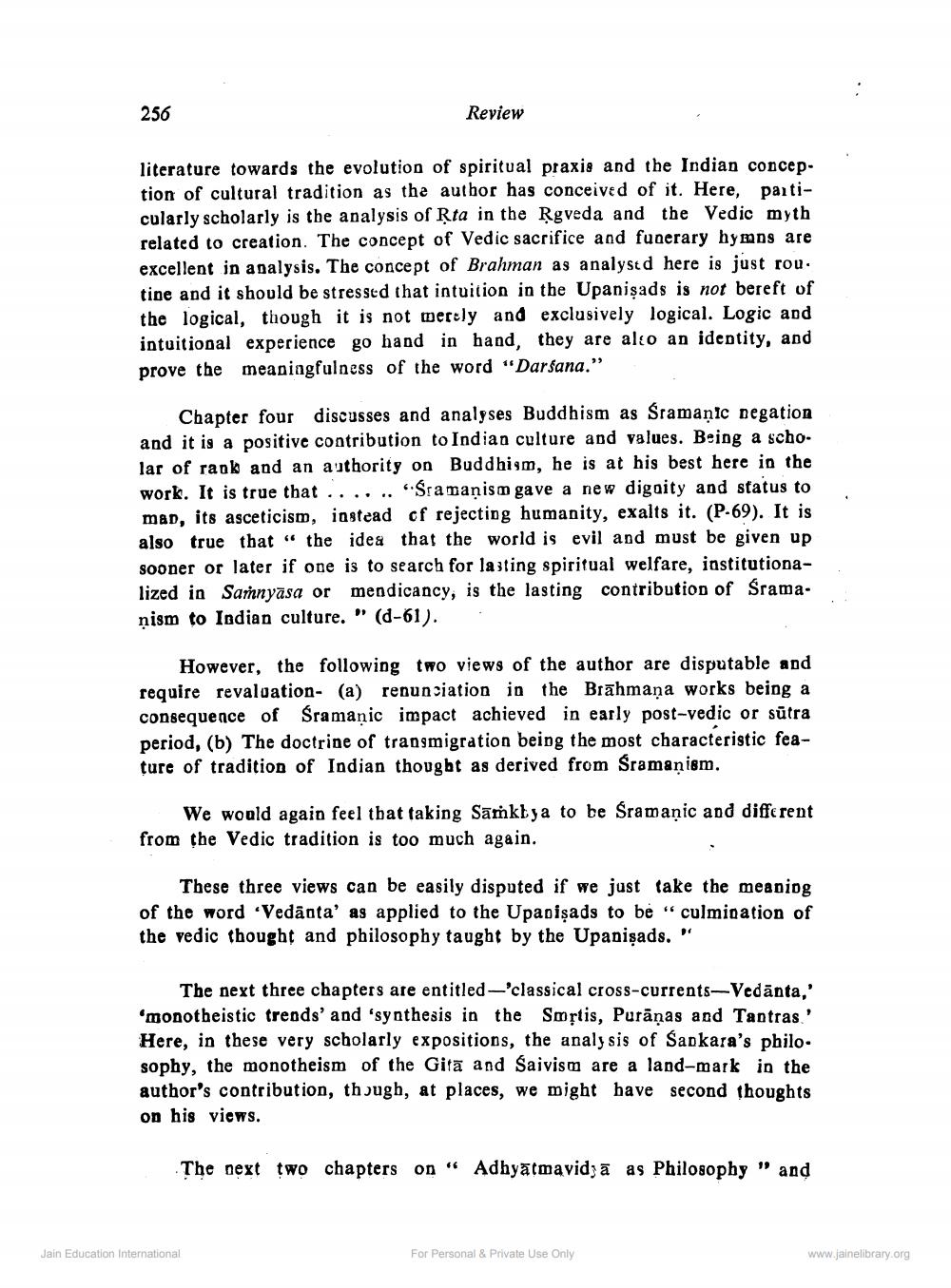________________
256
Review
literature towards the evolution of spiritual praxis and the Indian conception of cultural tradition as the author has conceived of it. Here, particularly scholarly is the analysis of Rta in the Rgveda and the Vedic myth related to creation. The concept of Vedic sacrifice and funerary hymns are excellent in analysis. The concept of Brahman as analyst d here is just rou. tine and it should be stressed that intuition in the Upanişads is not bereft of the logical, though it is not merely and exclusively logical. Logic and intuitional experience go hand in hand, they are also an identity, and prove the meaningfulness of the word "Darsana."
Chapter four discusses and analyses Buddhism as Sramanic negation and it is a positive contribution to Indian culture and values. Being a scholar of rank and an authority on Buddhism, he is at his best here in the work. It is true that ...... "Sramaņiso gave a new digoity and status to man, its asceticism, instead of rejecting humanity, exalts it. (P-69). It is also true that “the idea that the world is evil and must be given up sooner or later if one is to search for lasting spiritual welfare, institutionalized in Samnyāsa or mendicancy, is the lasting contribution of śramanism to Indian culture. " (d-61). -
However, the following two views of the author are disputable and require revaloation- (a) renunciation in the Brāhmaṇa works being a consequence of Sramanic impact achieved in early post-vedic or sūtra period, (b) The doctrine of transmigration being the most characteristic feature of tradition of Indian thought as derived from Sramanism.
We would again feel that taking Sāmktya to be śramaņic and different from the Vedic tradition is too much again.
These three views can be easily disputed if we just take the meaning of the word "Vedānta' as applied to the Upadişads to be "culmination of the vedic thought and philosophy taught by the Upanişads."
The next three chapters are entitled —'classical cross-currents-Vedānta,' 'monotheistic trends' and 'synthesis in the Smộtis, Purāṇas and Tantras.' Here, in these very scholarly expositions, the analysis of Sankara's philosophy, the monotheism of the Gita and Saivism are a land-mark in the author's contribution, thyugh, at places, we might have second thoughts on his views.
The next two chapters on " Adhyatmavid;ā as Philosophy " and
Jain Education International
For Personal & Private Use Only
www.jainelibrary.org




